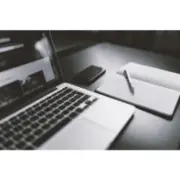It’s Behind You!
Oh no, it isn’t! Oh, yes it is!
All of us have experienced big changes in our lives thanks to Covid 19. And, few of us will have failed to come up against the video conferencing phenomena, whether for business or as a way of communicating with friends.
TV channels have produced endless interviews featuring ‘professionals’ at home including cabinet ministers, pop stars, virtual choirs of 400 plus people, children’s birthday parties with entertainers, even Royalty had a go, all in little boxes on a screen!
And, whilst it may be jolly good fun, how many of us are thinking about what we are showing behind and around us? How we are opening up our homes to hackers or other ‘badies’ who get a chance to review what we have. It is so easy for them to take a screenshot and then take their time to process the image, zooming in on details which usually, would never be seen, unless you were inside the house.
Consider for example the personal information you may have on show. Individual’s photographs should be turned over so as to protect identity. Just think about the GDPR aspects of PII data, as this is still in scope for the regulation and could lead to a data breach and ICO investigation.
What is displayed behind you can say a lot about you and your hobbies. This is a good source of information for a hacker, who will use it to try and guess your password theme. For example, if you have a model of an E Type Jaguar and books on the history of the mark, there is a good chance your passwords might be linked to the brand.
A hacker can also gain information to furnish a phishing email campaign, using relevant information that it is likely that you will find of interest and therefore, more likely to click on a link. If you have a lot of books by a particular author for instance, you could be the target of a phishing campaign with content relevant to that author, including a call to action that you can’t resist.
And, often when online, other technology used in the house can be seen. Printers are often in view giving a hacker a head start about routes to hack, by sending a spoof message appearing to come from your printer manufacturer or known backdoors in devices, to allow for remote connections.
On-line visual communications are here to stay so we must get better at thinking about what others can see behind us, ensuring that we are happy to share that information. When in doubt, keep it simple, use a pale wall to frame your background, make sure you are the star not the information you are giving away unknowingly!


